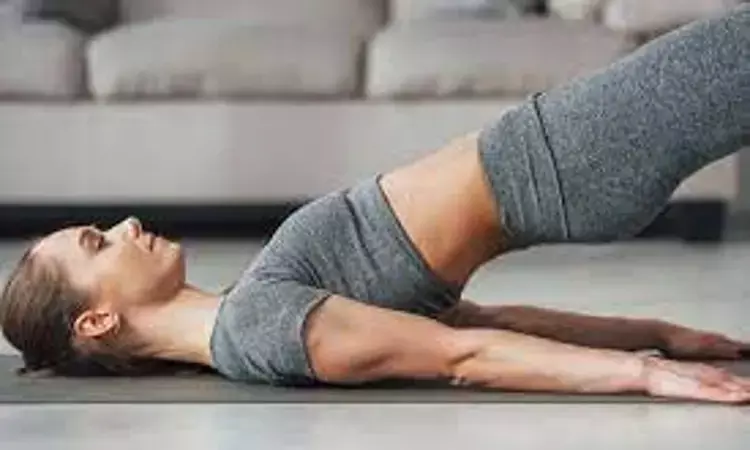- Home
- Medical news & Guidelines
- Anesthesiology
- Cardiology and CTVS
- Critical Care
- Dentistry
- Dermatology
- Diabetes and Endocrinology
- ENT
- Gastroenterology
- Medicine
- Nephrology
- Neurology
- Obstretics-Gynaecology
- Oncology
- Ophthalmology
- Orthopaedics
- Pediatrics-Neonatology
- Psychiatry
- Pulmonology
- Radiology
- Surgery
- Urology
- Laboratory Medicine
- Diet
- Nursing
- Paramedical
- Physiotherapy
- Health news
- Fact Check
- Bone Health Fact Check
- Brain Health Fact Check
- Cancer Related Fact Check
- Child Care Fact Check
- Dental and oral health fact check
- Diabetes and metabolic health fact check
- Diet and Nutrition Fact Check
- Eye and ENT Care Fact Check
- Fitness fact check
- Gut health fact check
- Heart health fact check
- Kidney health fact check
- Medical education fact check
- Men's health fact check
- Respiratory fact check
- Skin and hair care fact check
- Vaccine and Immunization fact check
- Women's health fact check
- AYUSH
- State News
- Andaman and Nicobar Islands
- Andhra Pradesh
- Arunachal Pradesh
- Assam
- Bihar
- Chandigarh
- Chattisgarh
- Dadra and Nagar Haveli
- Daman and Diu
- Delhi
- Goa
- Gujarat
- Haryana
- Himachal Pradesh
- Jammu & Kashmir
- Jharkhand
- Karnataka
- Kerala
- Ladakh
- Lakshadweep
- Madhya Pradesh
- Maharashtra
- Manipur
- Meghalaya
- Mizoram
- Nagaland
- Odisha
- Puducherry
- Punjab
- Rajasthan
- Sikkim
- Tamil Nadu
- Telangana
- Tripura
- Uttar Pradesh
- Uttrakhand
- West Bengal
- Medical Education
- Industry
No additional benefit of pelvic floor muscle training over bladder training among women with overactive bladder

No additional benefit of pelvic floor muscle training over bladder training among women with overactive bladder suggests a new study published in the journal of Neurourology Urodynamics.
Randomized controlled clinical trial including women with OAB symptoms, randomized into two groups: BT versus BT + PFMT. For 12 consecutive weeks, the women received home BT. The BT + PFMT performed supervised PFMT, once/week, associated at home PFMT protocol. Primary outcomes were urinary urgency, daytime voiding frequency, nocturia and urgency urinary incontinence assisted by both 3-day bladder diary and International Consultation on Incontinence OAB (ICIQ-OAB) questionnaire. Secondary outcomes were 24-h pad test and Patient Global Impression of Improvement. T-test, analysis of variance, Mann–Whitney (SPSS 20.0) and power/effect size (G-power) were applied in data analyses.
Results
Sixty-three women were included (B = 31; BT + PFMT = 32). There was no significant statistical difference between groups in terms of urinary symptoms: daytime frequency (BT: pre: 11.59 [±5.80], post: 9.10 [±4.05]; BT + PFMT: pre: 10.67 [±3.73], post: 8.08 [±3.38]) p = 0.75; nocturia: (BT: pre: 1.46 [±0.91], post: 0.82 [±0.82]; BT + PFMT: pre: 1.80 [±2.26], post: 0.82 [±1.15]) p = 0.70; urinary urgency (BT: pre: 3.22 [±4.70], post: 4.49 [±4.32]; BT + PFMT: pre: 6.87 [±5.60], post: 6.15 [±4.52]) p = 0.10; ICIQ-OAB total score: (BT: pre: 9.16 [±2.55], post: 6.32 [±3.77]; (BT + PFMT: pre: 9.75 [±2.06], post: 5.06 [±3.44] p = 0.30.
Supervised PFMT added to BT did not provide further improvements than isolated BT in women with OAB symptoms.
Reference:
Monteiro, S, Rocha, AK, Valim, L, Silva, SLAd, Riccetto, C, Botelho, S. Bladder training compared to bladder training associated with pelvic floor muscle training for overactive bladder symptoms in women: a randomized clinical trial. Neurourol Urodyn. 2023; 1-10. doi:10.1002/nau.25285
Keywords:
No, additional, benefit, pelvic, floor, muscle, training, over, bladder, training, among, women, overactive bladder,Monteiro, S, Rocha, AK, Valim, L, Silva, SLAd, Riccetto, C, Botelho, S.
Dr. Shravani Dali has completed her BDS from Pravara institute of medical sciences, loni. Following which she extensively worked in the healthcare sector for 2+ years. She has been actively involved in writing blogs in field of health and wellness. Currently she is pursuing her Masters of public health-health administration from Tata institute of social sciences. She can be contacted at editorial@medicaldialogues.in.
Dr Kamal Kant Kohli-MBBS, DTCD- a chest specialist with more than 30 years of practice and a flair for writing clinical articles, Dr Kamal Kant Kohli joined Medical Dialogues as a Chief Editor of Medical News. Besides writing articles, as an editor, he proofreads and verifies all the medical content published on Medical Dialogues including those coming from journals, studies,medical conferences,guidelines etc. Email: drkohli@medicaldialogues.in. Contact no. 011-43720751


